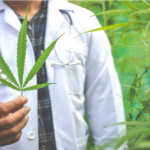
Welcome to the world of medical cannabis, a once-prohibited plant that is today a major player in the medical field. As more and more states legalize the use of medical cannabis, the topic has received considerable attention and appeal in recent years in the United States. Medical cannabis is changing the game in the treatment of a variety of medical problems, from lowering seizures and anxiety to easing pain and nausea.
What what is medical cannabis, though? How does it function? And what effect does it have on American culture and the healthcare system? These are just a few of the issues we’ll be talking about in this article.
We’ll go into the realm of medicinal cannabis in this post and go through its therapeutic advantages, legal standing, sociological repercussions, and economic influence. We’ll also look at some of the drawbacks and issues with using it, as well as the possibility for new innovations and research in the field of medical cannabis. So fasten your seatbelts and get ready to learn more about the intriguing world of medicinal marijuana and how it has impacted American society and the healthcare system.
Benefits of Cannabis for Health
Medical marijuana has a number of therapeutic advantages that have been demonstrated, making it a desirable therapy choice for patients looking for non-traditional therapies. The body’s endocannabinoid system, which is involved in controlling physiological processes including pain, inflammation, and mood, has been discovered to interact with the active molecules in the plant known as cannabinoids.
According to research, medical marijuana can reduce the symptoms of a number of illnesses, including anxiety, nausea, nausea, and muscle spasms. Medical marijuana is frequently prescribed in the USA to treat diseases like epilepsy, multiple sclerosis, cancer, HIV/AIDS, and glaucoma.
It has been shown in numerous trials that medicinal cannabis is beneficial in treating various diseases; in some cases, it even outperforms conventional therapies. For instance, a study indicated that medicinal cannabis was beneficial in lowering chronic pain and enhancing sleep quality in individuals with neuropathic pain. The study was published in the Journal of the American medicinal Association. It is becoming more and more obvious that medicinal cannabis has the ability to completely change how different medical diseases are treated as more study is done in this area.
legalizing medical marijuana
For many years, the legal status of medical marijuana in the USA has been a contentious matter. Although most states have authorized medical cannabis in some form, it is still prohibited at the federal level. This results in a complex and frequently frustrating legal environment for both individuals and healthcare professionals.
When the first states started allowing the use of medical cannabis for specific ailments in the 1970s, the history of medical cannabis legalization in the USA began. The movement didn’t really take off until the 1990s, when California became the first state to legalize medicinal marijuana in 1996.
Since then, numerous additional states have followed suit, and as of right now, 36 states permit the use of medical cannabis in some capacity. The availability and accessibility of medicinal cannabis for patients have expanded as a result of its legalization, and a new sector of the economy devoted to its production, distribution, and cultivation has emerged. Nevertheless, patients and medical professionals continue to face hurdles as a result of cannabis’ federal prohibition, such as restricted access to financial services and trouble securing insurance coverage for medicinal marijuana use.
Effects of Medical Cannabis on the Economy
The medicinal marijuana sector in the USA has a major economic impact, bringing in billions of dollars and producing a large number of jobs. An analysis by New Frontier Data predicts that by 2025, the medical cannabis business would be worth $30 billion.
In addition to offering patients other therapeutic choices, the legalization of medical cannabis has also bolstered the economy by spawning a new sector. Medical cannabis has helped to create jobs in the production, processing, and retail sectors as well as a source of tax income for state and local governments. For instance, Colorado received approximately $387 million in tax income from the sale of cannabis in 2020.
Additionally, it has been demonstrated that the usage of medicinal cannabis lowers healthcare expenses by giving patients access to more cost-effective and efficient treatment choices. The healthcare sector and the overall economy are expected to be affected even more negatively as the industry expands.
Impact of Medical Cannabis on Society
The legalization of medical cannabis has had a considerable impact on social views regarding drug use, crime rates, and public health and safety in the United States. A change in social views toward drug use has been facilitated by the increased acceptance and use of medicinal cannabis, as more people are becoming aware of its therapeutic benefits.
Legalization has been demonstrated to lower crime rates and the number of arrests for drug-related offences that don’t involve violence, as well as lower drug-related violence connected to the illegal drug trade. Medical marijuana has also been demonstrated to offer potential advantages for public health and safety, including a decrease in the number of opioid-related deaths and an increase in the number of accidents involving alcohol.
The societal impact of medical cannabis in the USA has been mainly favourable, with rising acknowledgement of its therapeutic benefits and potential for enhancing public health and safety, even though there are still worries about the potential harmful effects of cannabis use.
Problems with Using Medical Cannabis
Although medical cannabis has been found to offer potential therapeutic benefits, there are certain difficulties and issues with its use. The possibility of side effects, which can include dry mouth, lightheadedness, and reduced memory and focus, is one of the main difficulties. Additionally, medical marijuana and other drugs may interact negatively, possibly having a negative impact on one’s health.
Another set of difficulties arise when regulating cannabis usage for medical purposes in the USA, particularly in light of the cannabis legal system’s complicated and dynamic legal environment. Providing clear instructions for patients and medical experts as well as ensuring the consistency of the quality and strength of medical cannabis products are other ongoing concerns.
New studies on the effectiveness and safety of medical cannabis are constantly being published. Despite these difficulties, there is a growing demand for medical cannabis, which emphasizes the need for more study and better regulation to assure safe and efficient use.
Medical marijuana in the USA in the future
The potential for further study and innovation in the field of medical cannabis in the USA is very promising. There is a chance that novel cannabis-based medications and therapies for a variety of medical ailments could be created as more study is done. Additionally, the growing legalization and growth of medicinal cannabis use in the USA gives patients the chance to seek alternative medical options that may be more successful.
With more money being spent on research and development, medical cannabis is likely to continue to be accepted as a valid medical treatment in the future. But there are still issues, particularly with regulation and ensuring safe and efficient use.
Overall, the potential to alter healthcare and enhance the lives of millions of patients makes the future of medical cannabis in the USA an exciting and fast expanding scene.
Read More You May Like:








